
Recent studies have shown that over 9 million people die every year as a direct result of pollution. While very troubling, it seems the world IS gearing up to fight this phenomenon. There seemingly isn’t a day that goes by without news of some great new environmental innovation, but there’s still a ton of work to do to ensure the future of our planet for generations to come. Nevertheless, the stories below serve as examples of what can be achieved with ingenuity and determination, and give us a little hope for the future:
1. Bhutan has become the world’s first carbon-negative country

This tiny nation in the Himalayas actually removes more carbon dioxide from the atmosphere than it creates, making it the world’s first (and only) carbon-neutral country. This incredible feat was achieved as a by-product of a national policy developed by the king – Gross National Happiness. This policy was developed as part of an effort to make Bhutan the happiest country in the world.
Gross National Happiness is made up of four pillars, namely sustainable development, environmental protection, cultural preservation, and good governance. Examples of some of the green policies that are in effect in Bhutan include a law that 60% of the country’s landmass must remain as protected forest. Tourists also pay a small fee that goes toward its sustainable development when they visit.
Mass afforestation projects have contributed greatly to Bhutan’s ability to swallow up carbon, but its leaders are even more ambitious. They’re aiming to make food production in the country 100% organic by 2020, as well as aiming for zero net greenhouse gas emissions and zero waste by 2030. Last but not least, all of Bhutan’s cars will all be electric at some point in the near future.
2. New “Seabin” invention can clean plastic out of the ocean
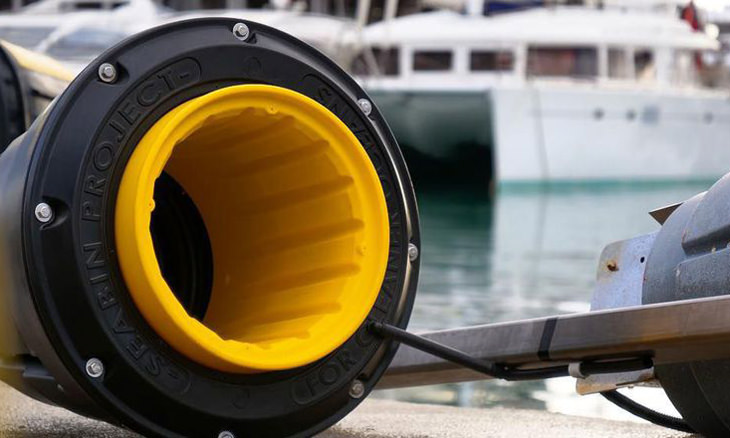
The problem with plastic is that it can take up to 1,000 years to decompose. Humanity is currently producing some 300 million tons of the stuff every single year, with most of it being for single use. No less than 8 million tons of plastic end up in the world’s oceans each year, and there’s no sign of that slowing down anytime soon.
A UK-based organization has decided to do something about the problem so it came up with the Seabin, which is a device that collects plastics of all sizes from the ocean. It can even collect oil, and the first Seabin has already been installed in the UK’s Portsmouth Harbor.
The Seabin is the size of a trashcan and is made of a large fiber net. It’s connected to a pump that’s set up on a dockside, creating a flow of water that sucks in any surrounding trash. Each bin can pull out 3.3lbs of plastic per day. Although that doesn’t seem like much, that can add up to half a ton of debris per year, which is the equivalent of 20,000 bottles, or 83,000 plastic bags.
3. Humble algae could be the savior of coral reefs
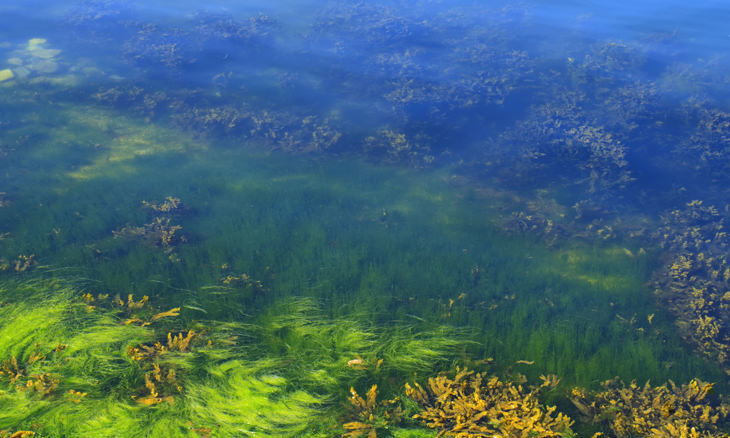
Algae has existed on Earth for billions of years, outliving trilobites, the dinosaurs and hundreds of thousands of other species. It exists in many different forms, from living inside the bodies of other creatures to growing in weird shapes and forms.
Coral reefs actually evolved in tandem with algae. Coral microorganisms slowly form hard shells around themselves and after hundreds of thousands of years, they become a beautiful, homogenous mass. Sadly, the world’s coral reefs are facing a devastating problem, namely coral bleaching, which occurs as a result of pollution and rising ocean temperatures.
Nevertheless, there are some scientists that emphasize the role of algae in the development of healthy reefs. Modern coral reefs actually have a relationship with a symbiotic strain of red algae that helps them to pull in sunlight and convert it into a supply of energy.
It’s hoped that algae could one day be farmed in order to help coral reefs pull through the bleaching phenomenon, eventually rehabilitating them in their entirety.
Content and image sources: 1, 2, 3
Remaining images by Deposit Photos.
 8:11
8:11
Fascinating: What is the Deepest Hole Humanity Has Dug?
This video explains how low humanity has dug down so far.
 9:11
9:11
Did You Know Bones Make Up 15% of Your Bodyweight?
A 9-minute video compilation stacked with facts you've never heard about nature and the human body.
 9:21
9:21
There Was a 1 in 10 Chance for the Dinosaurs to Survive!
Have you known that had the asteroid hit Earth in a different spot, the dinosaurs could still be alive today?
 3:16
3:16
You Wouldn't Believe How Far Technology Has Come
Take a look at the advancements of technology in this video. Impressive.
 8:10
8:10
Winter Hikers, Gather Round for the Best Tip of the Season
Here's how advanced snow hikers layer clothing in the winter.
 39:01
39:01
What's so Exciting About James Webb Space Telescope?
Why the new James Webb space telescope is much, much better than Hubble.

The 11 Best Meal Planning Apps to Help You Lose Weight
Fortunately, numerous apps can make meal planning—and potentially weight loss—much more achievable.

Four Great Tips for Hosting Guests With Food Allergies
The holiday season is a time for friends, family, and loved ones to come together under one roof and share meals. With so many gatherings during this festive period, there's a good chance you'll be hosting someone with food allergies at your table.
 2:29
2:29
CDs Become Magic Tools in This Mind-Bending Act
Watch this mind-bending magic act by Florian Sainvet in America's Got Talent.

The Great Mothers of History: 12 Famous Mothers!
History is laden with truly heroic moms, but we've gone to the trouble of picking 12 of the most heroic of all for you. Here are 12 of the best moms in history.

You Won’t Believe What These Old Buildings Once Were
Check out these cool pictures of some old buildings that have now been completely transformed.

6 Treasures Owners Unwittingly Used As Household Goods
Sometimes, a prized treasure is hiding right under the noses of unsuspecting citizens. Some precious antiques are even being put to good use as household items.

10 of the Weirdest Things Discovered at Airport Security
Here is a collection of ten of the weirdest things that airport security officers have found when on the job.
 6:48
6:48
Saffron - the Most Expensive Spice on Earth
Most of us can't even get our hands of this rare and expensive spice - saffron. But why is it so exclusive and pricey to begin with? Find out here

Benjamin Franklin's Wisdom Has Echoed Throughout the Ages
In addition to being one of the Founding Fathers of the United States, Benjamin Franklin left many a thought to ponder. Here are 15 of his most famous quotes.

13 Ways the English Language Changed Completely
English has changed so dramatically over the years, that texts from the medieval era are barely legible for modern English speakers. Why?

How About Learning Some Fun SLANG From Colonial Times?
Here are 14 fascinating words from Colonial times that sadly didn’t survive until the present days, but we certainly think they’re worth bringing back!

Louis Armstrong Said it Best, Didn't He...?
This amazing song can really open your eyes to nature's beauty, and the beauty we make for ourselves.

18 of the Most Incredibly-Timed Photos You'll Ever See
These photos will leave you in awe of their timing. The visual impact they have is staggering. Take a look at these 18 images.

The 10 Cult Movies Every Film Enthusiast Should Watch
These cult classics will change how you view cinema.
 2:45
2:45
The Evolution of Wedding Cakes Over the Past Century
Like anything else, the aesthetic of weddings is subject to fashion and change. And what better way to showcase this fashion than through wedding cakes?
 17:17
17:17
5 Widespread Legal Myths Dispelled by a Lawyer
Do you have to wait 24 hours to report a missing person? Can you marry your cousin? The answers from this lawyer to both of these questions will surprise you!
 9:01
9:01
Learn With a Smile: A Funny History of Japan
If you've ever wanted a crash course in Japanese history without it being too dull - this is the perfect video for you.
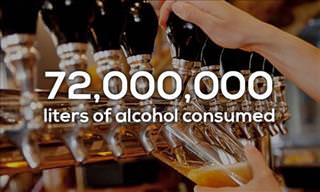
These Things Will All Happen in the Next 24 Hours
The world is incredibly busy, and doesn't stop moving for anyone. Millions of things happen every second but these 19 things will happen over the next 24 hours.
 3:00
3:00
This Nonagenarian Gymnast Will Leave You Speechless
Johanna Quaas, at the grand old age of ninety-one, is the world's oldest gymnast. In this video, she showcases her skills - be prepared to be amazed!

15 Sunday Quotes for Laughs, Reflection, and Rest
To celebrate the spirit of Sundays, we’ve gathered 15 quotes that capture the essence of this beloved day.

This Will Change Your Perspective On Anger
Anger is an often misunderstood emotion. These facts about anger will change your views on this common emotion.

16 Jaw-Dropping Archeological Finds
Even if you weren’t a fan of the subject back in school, you’ll love the visual history lesson we prepared for you today.

5 Ways Learning a New Language Benefits Your Brain
It turns out that knowing more than one language has a variety of positive effects on our brain

Urban Tales: Eight Stories That Shaped Our Cultures
In this article, we explore some of the most intriguing urban legends and folklore from various continents.

Real-Life Superheroes: Their Stories Will Amaze You
These real-life superheroes deserve recognition!

10 Words that Mean the Opposite of What They Used to Mean
These meaning of words we know today used to have an opposite meaning when they were first used.

The Most Famous Acts of Revenge in History
Each of these 5 stories reveals how far people have gone to right perceived wrongs – changing the world around them, for better or worse, in their relentless pursuit of retribution.

Bizarre But True: 15 Fascinating Facts That Surprised Us
These utterly amazing tidbits will leave you utterly amazed.

14 Mind-Blowing Optical Illusions You Must See
After trying to wrap your head around these crazy visual challenges, your eyes will be tired but your mind will be thrilled and elated!

18 Moments of History that Shed Light On Different Times
These 18 photos open a world of yesteryear for us to explore and enjoy.

These Crazy Pawn Shop Stories Will Have You in Stitches
Check out these weird and hilarious stories that pawn shop workers have encountered over the years.
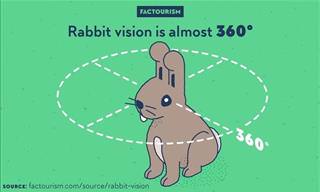
18 Fun Facts You Likely Never Heard of Cutely Illustrated
Don't the cute exterior of these illustrations deceive you. This is a real treasure trove of fascinating facts about the world we live in
 52:49
52:49
Full Documentary: What Happened to the Ancient Mayans?
Find out what happened to make the 2000-year-old Maya civilization suddenly disappear into nothingness.
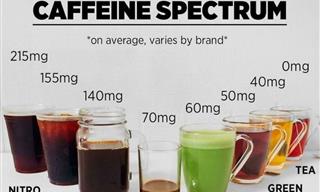
There’s a Visual Guide For Everything You Can Think Of!
Browsing through visual guides and maps like these is one of the easiest, funnest, and quickest ways to fill those knowledge gaps and learn something new!

9 Highly Praised Comedies from 2020-2025
Here is a look at nine highly praised comedies released between 2020 and 2025 that have defined the decade so far.

8 Well-Known Mysteries We Never Knew Had Been Solved
Uncovering the the secrets behind popular ‘unsolved mysteries’.
 27:15
27:15
Where Did 'Murphy's Law' Come From?
Learn the origin of this common phrase - Murphy's Law

These Are the Most Overused Words in the English Language
Are you guilty of using these overused words in English? Find out!

Why is South Korea Experiencing a Population Crisis?
What are the reasons behind South Korea's population problem, the worst in the world.

Where Did These Common Sayings Come From? Fascinating!
You're probably aware of these common sayings, but where did they originate from? Fascinating!
 58:01
58:01
Full Documentary: Genghis Khan's Legendary Mongol Empire
Learn all about his incredible conquests of the legendary Genghis Khan this cinematic full-length documentary.
 5:07
5:07
A Christmas Classic Sung Beautifully by Andrea Bocelli
Celebrate the season with Andrea Bocelli’s soulful rendition of ‘Jingle Bells’.
 7:30
7:30
Fascinating - Real CIA Experiments of Psychic Powers
There is a US army unit investigating the potential of psychic phenomena. Yes, this is a true story. Learn about their most fundamental experiment here.
To enable your Ad-Free Subscription, please fill the fields below
Your subscription was successful, now you can enjoy an ad-free experience!! Note: To make sure you get no ads, please make sure to log in to your account. If you are logged in already, then refresh the page. The subscription can be cancelled at any time.


